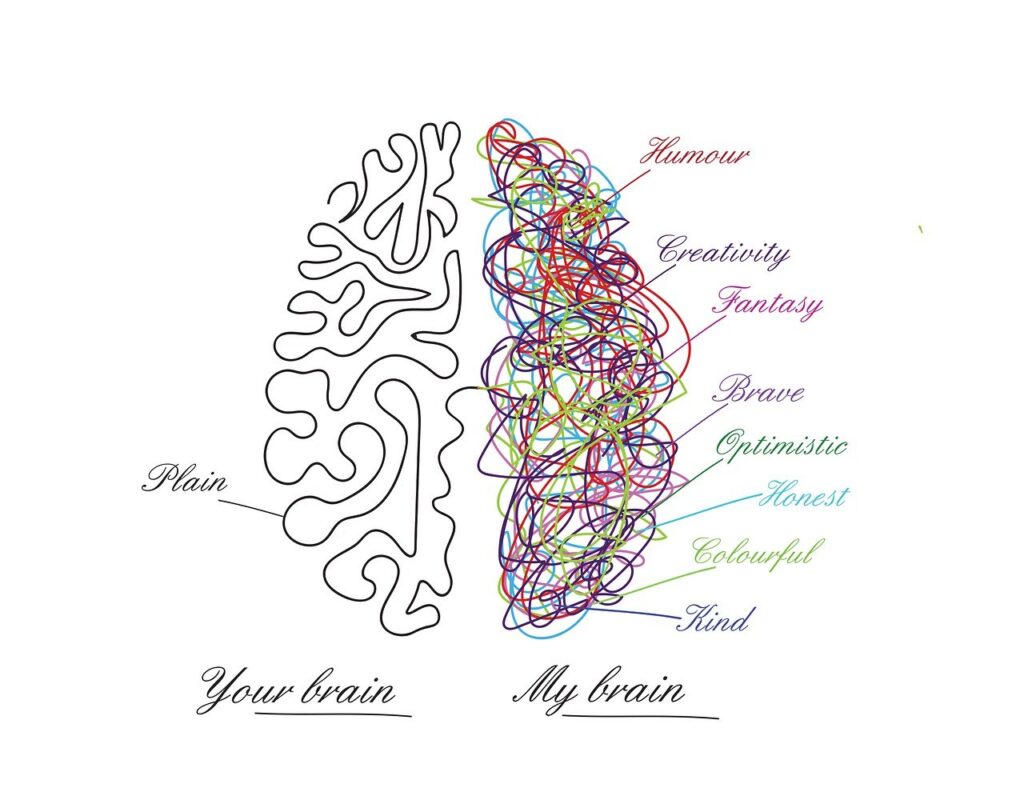From the shadows of society, figures like Ted Bundy, Jeffrey Dahmer, and John Wayne Gacy emerge as the archetypical villains of our worst nightmares. Yet, behind the mask of each notorious serial killer lies a complex psychological landscape that often defies understanding. The topic of Behind the Mask: The Psychological Profiles of Notorious Serial Killers is crucial not only for those fascinated by true crime but also for psychologists, law enforcement, and even public health officials seeking to prevent future tragedies. This exploration offers not just an understanding of evil but also provides insights into the human psyche that might help in identifying red flags before these horrific acts unfold.
This phenomenon of serial killers occupies a unique and unsettling space in the realm of criminal behavior. These individuals—responsible for multiple murders committed over a period of time, often following a distinct modus operandi—have long fascinated criminologists, psychologists, law enforcement officers, and the public alike. Their actions defy conventional morality, challenging our understanding of human nature and the boundaries of empathy. The central question remains: What drives a human being to kill repeatedly, often in a ritualistic or patterned manner?
This journey will delve into the intricate layers of the serial killer psyche, examining the common psychological traits, the profound impact of early life experiences, and the systematic methods employed by criminal profilers. By delving into these areas, we can better appreciate how modern criminology uses psychology not only to apprehend dangerous individuals but also to potentially prevent future atrocities. Join us as we unlock the minds behind these murders, seeking clarity in the darkest corners of human behavior.

1. **Defining the Serial Killer Mind** The intricacies of a serial killer’s mind often include a bewildering mix of sociopathy, psychopathy, and other mental health disorders. While murder itself is as old as human civilization, the concept of a serial killer is relatively modern in criminological discourse, gaining prominence with the investigative breakthroughs of the FBI’s Behavioral Science Unit. These individuals present a complex psychological landscape that demands rigorous analysis.
Psychopathy, characterized by a lack of empathy and remorse, is frequently found in these individuals. This emotional void means that victims are seen not as people, but as objects or means to an end. Without empathy, the psychological barriers that prevent most people from committing violence are nonexistent, leading to a detached view of their horrific acts.
Yet, psychopathy alone cannot explain their crimes. Sociocultural factors, early childhood experiences, and genetic predispositions also play pivotal roles in shaping their behavior. These elements combine to form a complex tapestry of influence, making the profiling and understanding of serial killers a multifaceted challenge that requires a holistic approach.
Read more about: The Darkest Chapters: Investigating 15 Psychopaths Whose Chilling Crimes Stunned Nations
2. **Common Psychological Traits of Serial Killers** Despite the diversity among serial killers, decades of criminal psychology research have identified recurring psychological traits. These traits are not isolated; they often overlap, forming complex and dangerous personality structures that aid law enforcement in creating profiles and help psychologists develop prevention strategies.
One of the most striking traits is a profound absence of empathy. This emotional detachment allows offenders to describe their acts in mechanical, detached language, showing no awareness of the suffering they caused. Gary Ridgway, “The Green River Killer,” famously stated, “I killed so many women I have a hard time keeping them straight,” a chilling testament to his lack of remorse and bureaucratic view of human life.
Narcissism—characterized by an inflated sense of self-importance and a need for admiration—is another recurring trait. Narcissistic killers often believe they are above the law, viewing their crimes as “art” or acts of superiority. The Zodiac Killer, for instance, sent cryptic letters and ciphers to newspapers, seemingly enjoying the media frenzy and challenging police to catch him, a clear manifestation of his need for recognition and ego-boosting.
Beyond these, traits like manipulativness, a desire for excitement that can lead to risk-taking behaviors (thrill-seeking), and a propensity to live in elaborate fantasies that may include violent scenarios (fantasy-prone) are also commonly observed. These traits are not deterministic in isolation, but their convergence in an individual often signals a dangerous psychological profile, feeding into a disturbing internal world that can lead to horrific external actions.
Read more about: Beyond the Headlines: Unpacking the Gruesome Legacies of 15 Infamous Psychopaths Who Shook History
3. **The Evolution of Criminal Profiling: From Intuition to Science** The human urge to explain violence, particularly repetitive, patterned killing, dates back centuries. In ancient societies, such acts were often interpreted through a religious or supernatural lens, with offenders labeled as possessed or cursed, reflecting the limited scientific understanding of human psychology at the time. The transition toward a more empirical approach began in the late 19th century with figures like Cesare Lombroso, who, despite his discredited biological determinism, made the first major attempt to link crime to identifiable human traits.
By the mid-20th century, the growing complexity of crime, especially serial murder, necessitated a more structured and scientific methodology. This critical need led to the creation of the Behavioral Science Unit (BSU) in 1972 at the FBI Academy in Quantico, Virginia. Spearheaded by visionaries like John E. Douglas and Robert Ressler, the BSU embarked on a groundbreaking project to systematically understand the minds of repeat offenders.
The BSU’s ambitious undertaking involved interviewing dozens of convicted serial killers, including notorious figures such as Ted Bundy, Edmund Kemper, and David Berkowitz (“Son of Sam”). These comprehensive interviews sought to uncover internal motivations, victim selection methods, and post-crime emotional states like remorse or detachment. The findings from these intensive discussions formed the foundational principles of the Criminal Investigative Analysis (CIA) method, combining psychological insights with forensic evidence to create actionable offender profiles for law enforcement agencies.
In the decades that followed, profiling evolved from a niche investigative tool into a recognized branch of law enforcement science. Today’s profilers integrate advanced techniques such as data analytics for statistical pattern identification, forensic science to link physical evidence to behavioral tendencies, and geographic profiling to map crime locations and predict offender “comfort zones.” This multidisciplinary approach, drawing from cognitive, behavioral, and psychoanalytic models, allows for a more comprehensive understanding of motivation and greatly enhances the ability to anticipate and intercept further crimes.
4. **The Role of Childhood Trauma: Roots of Violence** Behind many serial killers’ disturbing behaviors often lies a common thread: childhood trauma. This trauma can manifest in numerous forms, ranging from physical and sexual abuse to profound emotional neglect and chronic instability. While it is crucial to emphasize that not every individual who suffers trauma becomes violent, research in criminology and developmental psychology strongly suggests that severe early-life adversities can profoundly alter brain development, shape personality, and foster maladaptive coping mechanisms that, in rare instances, contribute to homicidal behavior.
Abuse, whether physical, emotional, or sexual, is one of the most documented factors in the backgrounds of serial killers. Physical abuse can normalize violence as a means of problem-solving, while sexual abuse can severely distort a child’s understanding of intimacy, potentially linking pleasure with domination or pain. Emotional abuse and neglect, on the other hand, deprive children of the essential validation and security required for healthy emotional growth. A 2005 study by Mitchell & Aamodt, reviewing 50 American serial killers, found that 68% experienced some form of abuse in childhood, 36% suffered chronic neglect, and 26% endured sexual abuse. Case examples like Aileen Wuornos, abandoned and abused, and Henry Lee Lucas, subjected to brutal physical beatings, vividly illustrate the lasting damage inflicted during these formative years, leading to emotional dysregulation, profound distrust, and hostility.
Psychologist Lenore Walker popularized the concept of the Cycle of Violence, which helps explain how victims of abuse may, in some cases, become perpetrators themselves. Repeated exposure to violence can lead individuals to internalize aggression as a normal part of relationships and conflict resolution. For some future offenders, killing may become a distorted means to regain control after years of feeling powerless, to reenact traumatic experiences with themselves in the role of the aggressor, or to displace anger toward surrogate victims who symbolically represent figures from their past. Edmund Kemper, who murdered his grandparents, mother, and multiple young women, reported intense resentment toward his emotionally abusive mother, with some criminologists interpreting his victim choices as symbolic revenge against maternal rejection and humiliation.
Children who grow up with inconsistent, neglectful, or abusive caregivers are at a significantly higher risk of developing insecure attachment styles. In extreme cases, this can result in Reactive Attachment Disorder (RAD) or other severe emotional impairments, leading individuals to struggle with trust, exhibit little empathy, and demonstrate poor impulse control. Richard Ramirez, the “Night Stalker,” for instance, experienced neglect and was exposed to graphic violence from a young age, including disturbing stories from a combat veteran cousin. Such traits, combined with environmental risk factors, can create fertile ground for violent fantasies and behaviors to emerge.
Furthermore, childhood trauma does not merely affect emotions; it can profoundly alter brain structure and function. Neuroscience studies reveal that chronic early stress can lead to the overactivation of the amygdala, an area linked to fear and aggression, and the underdevelopment of the prefrontal cortex, which is responsible for impulse control and decision-making. Such neurobiological changes can make individuals more prone to impulsivity, aggression, and poor emotional regulation—core components frequently observed in many violent crimes.
5. **The Dark Triad: Personality Traits of Extreme Criminals** The Dark Triad is a compelling concept in personality psychology, describing three distinct yet interrelated traits: narcissism, Machiavellianism, and psychopathy. These traits are frequently associated with manipulativeness, callousness, and a profound lack of morality. While these characteristics exist in varying degrees across the general population, their extreme manifestation can form the psychological bedrock of serial killers’ most chilling behaviors, offering critical insights for criminal profiling.
Narcissism, characterized by an inflated sense of self-importance, an insatiable craving for admiration, and a significant lack of genuine empathy for others, plays a crucial role. Narcissistic killers often perceive themselves as exceptional or superior, sometimes viewing their heinous crimes as a form of “art” or an intellectual challenge, rather than acts of depravity. Their ego-driven nature can lead them to seek media attention, feeding their need for recognition. Ted Bundy, frequently described as charming, articulate, and vain, notably represented himself in court, effectively using the trial as a public stage. Similarly, the Zodiac Killer’s cryptic messages to newspapers underscored his profound enjoyment of the nationwide attention and the perceived intellectual challenge he posed to authorities.
Machiavellianism, named after Niccolò Machiavelli, reflects a cynical worldview and a strategic willingness to exploit others for personal gain. Killers exhibiting strong Machiavellian traits meticulously plan their crimes with precision, often employing deception and psychological manipulation to lure victims and skillfully evade capture. They may even study police procedures and investigative techniques to stay one step ahead of law enforcement. John Wayne Gacy, for example, masterfully used his friendly public persona as a community volunteer to mask his predatory behavior, allowing him to lure young men without arousing suspicion, epitomizing the Machiavellian master manipulator.
Psychopathy, though not an official DSM-5 diagnosis, is widely studied in forensic psychology and often subsumed under Antisocial Personality Disorder (ASPD). It encompasses specific interpersonal and affective traits, including superficial charm – the ability to appear likable and trustworthy; manipulativeness – using deceit and persuasion to achieve personal goals; callousness – a profound disregard for others’ feelings or rights; a complete lack of guilt or remorse, even when confronted with the devastating consequences of their actions; and poor behavioral control, manifesting as impulsivity and disregard for rules. Research using Robert Hare’s Psychopathy Checklist (PCL-R) consistently shows that many serial killers score extremely high, indicating pervasive patterns of manipulation and emotional detachment, as seen prominently in individuals like Ted Bundy and Richard Ramirez.
6. **Methods, Patterns, and Signatures: How Serial Killers Choose to Kill** When delving into the minds of serial killers, understanding their methods, patterns, and signatures is paramount for criminal profilers. These elements are not random; they reveal crucial insights into the offender’s psychological makeup, motivations, and the progression of their violent fantasies. Psychological profiling emerged as a specialized investigative technique aimed at bridging the gap between psychology and law enforcement, utilizing these behavioral patterns to infer personality traits and likely backgrounds of offenders.
A fundamental distinction in profiling is between organized and disorganized killers. Organized killers are typically intelligent, socially adept individuals who meticulously plan their crimes. They often target strangers, engage in sexual sadism, and maintain control over the crime scene, leaving little evidence. Their crimes are often driven by complex fantasies that are carefully acted out. On the other hand, disorganized killers tend to be socially inadequate, committing impulsive, chaotic acts, often near their residence. Their crimes lack meticulous planning, victims may be known to them, and evidence is frequently left behind, reflecting their chaotic psychological state.
Furthermore, profilers differentiate between Modus Operandi (MO) and Signature. The MO refers to the consistent behaviors an offender uses to commit the crime itself, such as methods of entry, restraints, or weapon choice, which are learned and can evolve as the killer adapts to avoid capture. For example, Bundy’s method of faking an injury to lure victims was part of his MO. The Signature, however, is a unique, often ritualistic, aspect of the crime that serves no practical purpose in committing the act but fulfills a psychological need or fantasy for the offender. It’s the “why” behind their actions, a unique calling card. The BTK Killer’s elaborate bondage and torture rituals were part of his signature, providing him with a profound sense of control and satisfaction.
Victim selection also provides critical clues. Serial killers often target victims who fit a specific profile based on age, gender, occupation, or vulnerability, which reflects their underlying psychological needs or fantasies. The patterns of victim selection, combined with escalation and cooling-off periods—where the severity of crimes might increase over time, interspersed with breaks—offer a dynamic picture of the killer’s evolving pathology. Geographic patterns, or “hunting grounds,” also provide insights, mapping crime locations to predict offender “comfort zones” and assist in narrowing down search areas. These combined elements allow profilers to construct a detailed psychological roadmap, aiding law enforcement in their pursuit.

7. **Case Study: Ted Bundy – The Charismatic Predator** Ted Bundy stands as one of the most infamous serial killers, a chilling epitome of psychopathy cloaked in superficial charm. He was a highly charismatic individual, able to charm his way into the lives of his victims, a classic trait of psychopathy. His case exemplifies how seemingly ordinary individuals can harbor dark impulses, making him a central figure in the FBI’s early efforts to understand the serial killer mind and a prime subject for criminal profiling.
An analysis of Bundy’s early life suggests that a turbulent upbringing, combined with his interest in violence, set the stage for his horrific actions. He later admitted to feeling a compulsion that he could not resist, highlighting the disturbance deep within his psyche. Bundy admitted that violent sexual fantasies drove his murders, escalating from voyeurism to physical assault and eventually murder, demonstrating the powerful role of fantasy in his crimes.
In 1978, two FBI specialists utilized their profile of him to place him on the top 10 most wanted list. Using this assessment of his methods, psychological makeup, and known movements, the Bureau pinpointed his victim selection and killing patterns. Bundy favored venues that attracted the young, beautiful women he targeted—discos, college campuses, and resorts. This behavioral analysis was instrumental in understanding his predatory approach.
Because the FBI carefully analyzed Bundy’s style of killing and had a firm understanding of his psychological makeup, canvassing the public and posting information about him led to his final capture in February of 1978. Understanding Bundy’s psychology aids in building profiles that can help law enforcement recognize potential threats, making his case a foundational example of the power and efficacy of criminal investigative analysis.
Having established the foundational psychological concepts and the history of profiling, our journey into the minds of notorious serial killers continues. We now turn our attention to additional infamous case studies, examining the unique facets of their pathologies, the challenges encountered in profiling, and the broader societal implications of such horrific crimes. Understanding these individual narratives helps to refine our collective comprehension of extreme human behavior.

8. **Case Study: Jeffrey Dahmer – The Quest for Absolute Control** Jeffrey Dahmer’s atrocities ventured into realms of depravity that continue to horrify and confound. His crimes extended far beyond murder, encompassing gruesome acts of dismemberment and necrophilia. These extreme behaviors were not random; they were driven by a profound and pathological need for absolute control over his victims.
Dahmer’s confessions revealed a chilling desire to possess and dominate completely, a psychological imperative stemming from deep-seated insecurities. His struggles with sexual identity, coupled with profound loneliness, reflect significant underlying psychological issues that festered beneath the surface. This unique intersection of mental illness with intense, controlling desires shaped his horrifying actions.
Early signs of this disturbed psychological trajectory were evident in Dahmer’s childhood fascination with animal carcasses. This macabre interest gradually escalated into experiments on animals, which tragically foreshadowed his later, far more egregious acts against humans. This progression underscores how early behaviors, when unaddressed, can evolve into extreme pathology.
Dahmer serves as a stark case study where severe mental illness converged with deep-seated desires for dominance and possession. It highlights a critical societal need for greater emphasis on psychiatric care. Addressing mental health issues comprehensively and at earlier stages might indeed alter the course of such lives, potentially preventing future tragedies and underscoring the importance of early intervention in society.

9. **Case Study: John Wayne Gacy – The Duality of the ‘Killer Clown’** John Wayne Gacy, notoriously dubbed the “Killer Clown,” epitomized a chilling duality that allowed him to operate unseen for years. To the public eye, he was a jovial, community-oriented businessman and entertainer, often performing at children’s parties. This carefully constructed facade starkly contrasted with his hidden identity as a brutal serial killer.
Gacy’s manipulative charm was a key instrument in maintaining this deception, effectively disarming suspicion while he engaged in horrific killings. His persistent fantasy life, where he seemingly felt invincible, fueled his heinous actions and enabled him to compartmentalize his two vastly different existences. This ability to project an image of normalcy while harboring monstrous secrets is a hallmark of extreme psychopathy.
This case powerfully illustrates the profound theme of duality in human nature. It demonstrates how an individual can lead a seemingly normal life, actively contributing to the community, while simultaneously cultivating a hidden identity of extreme violence. Understanding this psychological phenomenon is crucial for investigators and the public alike.
Gacy’s life underscores the critical importance of recognizing subtle warning signs that often go unnoticed within seemingly ordinary individuals. His capacity for deep manipulation and his imperviousness to detection for so long spark crucial discussions on how we can better understand and identify these indicators, potentially preventing such tragedies from unfolding again.

10. **Case Study: Joseph Paul Franklin – Escalation and Ideology** Joseph Paul Franklin’s violent trajectory offers a quintessential example of what behavioral analysis experts term escalation. His killing spree unfolded chaotically, yet a sinister pattern emerged: his victims shared the singular commonality of not being white, reflecting his deeply ingrained white supremacist ideology. This progression from less severe crimes to murder is a key behavioral indicator.
Franklin’s deeply abusive childhood served as a fertile ground for his radicalization. He found a twisted sense of control and dominance within the extremist ideology of white supremacy. He often eschewed organized hate groups, believing their philosophies did not go far enough, showcasing his extreme, self-directed fanaticism.
His first documented violent attack occurred on Labor Day in 1976, initiating a pattern of escalating severity that continued for several years. Franklin committed crimes of opportunity, drifting across the country and financing his movements by robbing banks, all while taking the lives of those who met his violent, racially motivated criteria.
Given his high mobility and the geographically dispersed nature of his crimes, conventional investigative methods struggled to connect the dots. It was only through the sophisticated criminal profiling of the FBI that his capture became possible in 1980. His case highlights how behavioral analysis can link disparate incidents, providing critical insight into an offender’s psychological makeup and movement patterns.

11. **Case Study: Wayne Williams – Behavioral Analysis in Action** The Atlanta child murders, spanning from 1979 to 1982, presented a harrowing challenge to law enforcement. A series of apparently connected murders emerged, predominantly involving young, African-American males. In the face of widespread fear and limited leads, behavioral analysis became an indispensable tool for investigators.
Criminal profilers quickly discerned a critical victim profile: young, African-American males, often taken from public areas during daylight hours. This detailed insight, derived from meticulous behavioral analysis, allowed law enforcement to focus their efforts and exclude numerous unrelated murders that tragically occurred in Atlanta during the same period.
The application of these analytical insights was crucial for directing the investigation, preventing it from being overwhelmed by the sheer volume of cases. By understanding the killer’s victim selection patterns and modus operandi, investigators gained a vital psychological roadmap, narrowing down the potential pool of suspects and targets.
These precise perceptions, born from rigorous behavioral analysis, ultimately led to the capture of Wayne Williams in the spring of 1982. Williams’ case stands as a powerful testament to the practical efficacy of criminal profiling, demonstrating its ability to translate complex behavioral patterns into actionable intelligence that can apprehend dangerous serial offenders.
12. **Case Study: Andrew Cunanan – The Intelligent, Chaotic Spree** Andrew Cunanan’s chaotic killing spree in the late 1990s culminated with the high-profile murder of fashion icon Gianni Versace in Miami Beach, Florida. However, the FBI had been actively tracking Cunanan long before this climactic event, highlighting the importance of ongoing investigative analysis in rapidly evolving cases.
Cunanan was characterized by high intelligence and an intense drive to live a life of luxury, a lifestyle he initially supported through homosexual prostitution. Yet, a rapid and profound “devolvement of opportunistic theft and flight” preceded his abrupt escalation to murder. This sudden, violent shift is often a critical red flag in profiling.
His spree saw him moving across state lines, leaving a trail of victims from Minneapolis to Miami. The FBI meticulously followed this trail, using behavioral patterns and victimology to track his movements and anticipate his next actions. This cross-country pursuit underscored the national scope and complexity of such investigations.
The relentless pressure from the intensifying manhunt, driven by the FBI’s profiling efforts, ultimately led to Cunanan taking his own life shortly after the murder of Versace. His case exemplifies how sustained behavioral analysis can effectively corner even highly intelligent and mobile offenders, forcing their hand and bringing a violent spree to a definitive, albeit tragic, end.
13. **Limitations and Criticisms of Psychological Profiling** While psychological profiling has proven invaluable in numerous investigations, it is not without its limitations and criticisms. It’s essential to approach profiling not as an infallible science, but as a sophisticated investigative tool with inherent complexities and potential pitfalls. A balanced perspective requires acknowledging these challenges.
One significant concern revolves around the “lack of scientific rigor” in some profiling methodologies. Critics argue that profiling often relies heavily on subjective interpretation, intuition, and anecdotal evidence rather than strictly empirical data. This can make it difficult to validate profiles scientifically or to establish a consistent, replicable framework.
Another common criticism is the risk of “confirmation bias.” When a profile is generated, investigators may inadvertently focus on evidence that supports the profile while overlooking contradictory information. This can potentially lead investigations astray, narrowing the focus prematurely and excluding viable suspects who do not fit the preconceived behavioral mold.
Furthermore, issues of “misuse in courtrooms” have arisen, where profiles, despite their investigative nature, might be presented as definitive evidence rather than a guide. There are also concerns about “cultural and gender bias,” where profiles might be too generalized or rooted in stereotypes, potentially neglecting the diversity of human behavior. Ethical and privacy concerns also exist, particularly regarding data collection and the impact of a profile on an individual’s reputation.
Read more about: Some Analytical Insights into Ukraine’s Evolving Air Strategy: Precision Strikes, Tactical Revelations, and Geopolitical Shifts

14. **Societal and Cultural Influences on Criminal Behavior** Understanding serial killers requires looking beyond individual psychological profiles to consider the broader societal and cultural forces that can influence criminal behavior. No individual exists in a vacuum; socioeconomic conditions, community dynamics, and cultural norms play significant roles in shaping psychological development and behavioral outcomes.
“Socioeconomic conditions and marginalization” are critical factors. Poverty, unstable housing, exposure to endemic crime, and a lack of educational opportunities can profoundly exacerbate the effects of childhood trauma. Children growing up in high-risk environments may develop maladaptive survival strategies—such as manipulation, aggression, or deceit—which later align with traits observed in adult offenders.
“Cultural norms and media influence” also play a role, as do “family and community dynamics.” The values, expectations, and support systems (or lack thereof) within a community can either foster resilience or contribute to the development of violent tendencies. Cultivating strong, supportive environments and encouraging empathy from an early age are vital in mitigating the pathways to extreme violence.
The importance of prevention and support cannot be overstated. Society must prioritize early intervention programs, robust mental health services, and community-based initiatives to address root causes of violence before they escalate. By understanding these macro-level influences, we can move towards building more resilient communities capable of supporting at-risk individuals and inhibiting the development of severe behavioral pathologies.
As we conclude this profound exploration into the depraved minds of serial killers, it becomes abundantly clear that understanding these dark corners of the human psyche is a multidisciplinary endeavor. It requires the relentless work of law enforcement, the nuanced insights of psychology, and the unwavering commitment of society as a whole. From the individual pathology to the broader cultural canvas, each layer offers crucial lessons.
Read more about: Unveiling the Dark Side of Your Dream Ride: 12 Hidden Meanings of That Mysterious Black Car
By continuing to peel back the masks of horror and confronting the complexities of criminal behavior, we arm ourselves with knowledge. This knowledge empowers us not just to apprehend those who commit unspeakable acts, but more importantly, to identify red flags, strengthen our communities, and foster environments where such profound depravity is less likely to take root. This journey demands ongoing education, profound awareness, and collective compassion, all of which are essential ingredients in our ongoing efforts to reshape our collective future towards greater safety and understanding.











